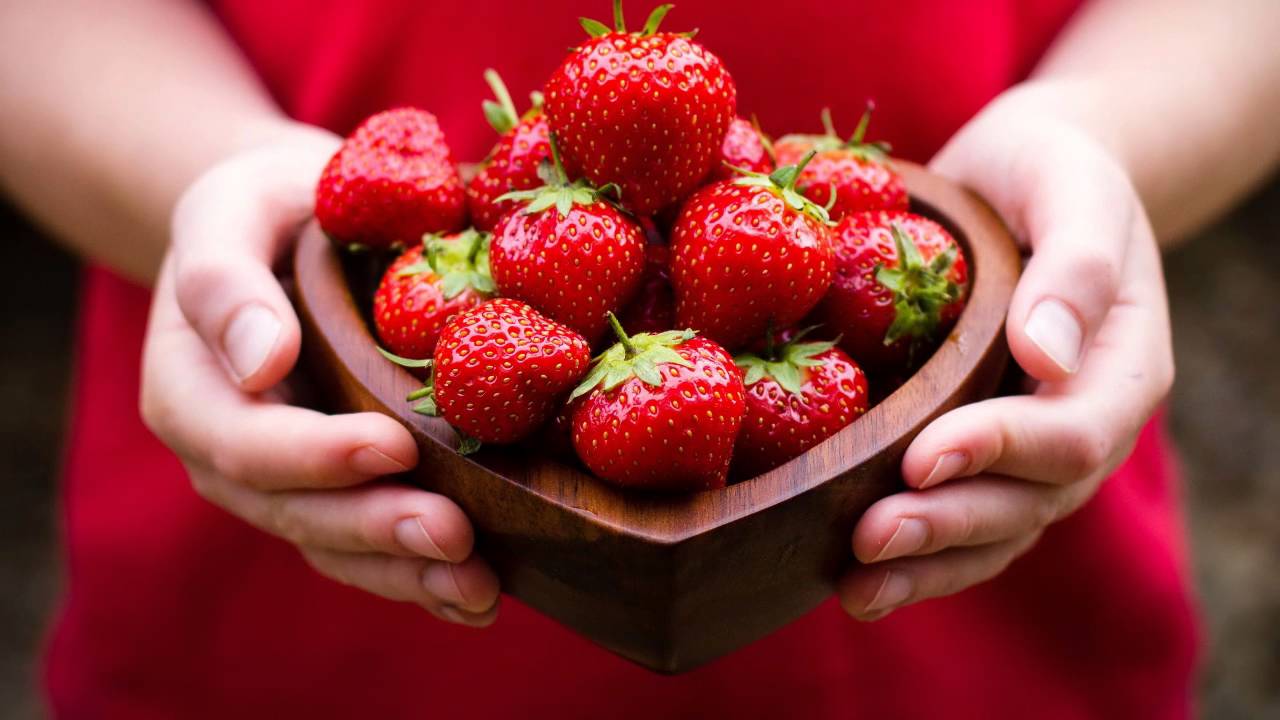
Instructions for the care of strawberries in the spring.
The content of the article
- What to do with strawberries in the spring in March immediately after winter than to feed them: advice of experienced gardeners
- The better to feed and process strawberries in the spring before flowering and before flowering in April: advice of experienced gardeners
- The better to feed and process strawberries in the spring during flowering in May: tips, care for flowering strawberries
- How to treat strawberries in spring from diseases, pests, weevils and gray rot?
- Flack and root feeding, watering strawberries in the spring: Description
- How and in what quantity to use ammonia, urea for feeding and processing strawberries in the spring?
- How and in what quantity to use iodine for feeding and processing strawberries in the spring?
- How and in what quantity to use boric acid to feed and process strawberries in the spring?
- How and in what quantity to use ash for feeding and processing strawberries in the spring?
- How and in what quantity to use yeast to feed strawberries in the spring?
- How and in what quantity to use hydrogen peroxide for feeding and processing strawberries in the spring?
- Video: Transoxide for strawberries
- How and in what quantity to use chicken droppings for feeding strawberries in the spring?
- Video: litter litter
- How and in what quantity to use manure for feeding strawberries in the spring?
- How and in what quantity to use potassium permanganate for feeding and processing strawberries in the spring?
- How and in what quantity to use copper sulfate for feeding and processing strawberries in the spring?
- How and in what quantity to use carbamide for feeding and processing strawberries in the spring?
- Video: Carbamide for strawberries
- How and in what quantity to use a burgundy mixture for feeding and processing strawberries in the spring?
- How and in what quantity to use superphosphate to feed strawberries in the spring?
- How and in what quantity to use complex fertilizers for feeding strawberries in the spring
- Video: Strawberry Care in the spring
Strawberries are sufficiently capricious plant, which requires special attention. A lot of work in summer residents is observed in early spring. It is during this period that it is necessary to prepare strawberry bushes for their further growth and development. Without preparatory work, you will not be able to get large berries and a large number of them.
What to do with strawberries in the spring in March immediately after winter than to feed them: advice of experienced gardeners
In the spring time, or rather in March, immediately after the winter, you have several necessary manipulations that need to be carried out.
Manipulation:
- Remove garbage
- Correct the sides
- Mulch the soil
- Feed the plant (saturated mullein)
- Prevention, that is, processing strawberries with drugs in order to avoid infection with dangerous diseases.
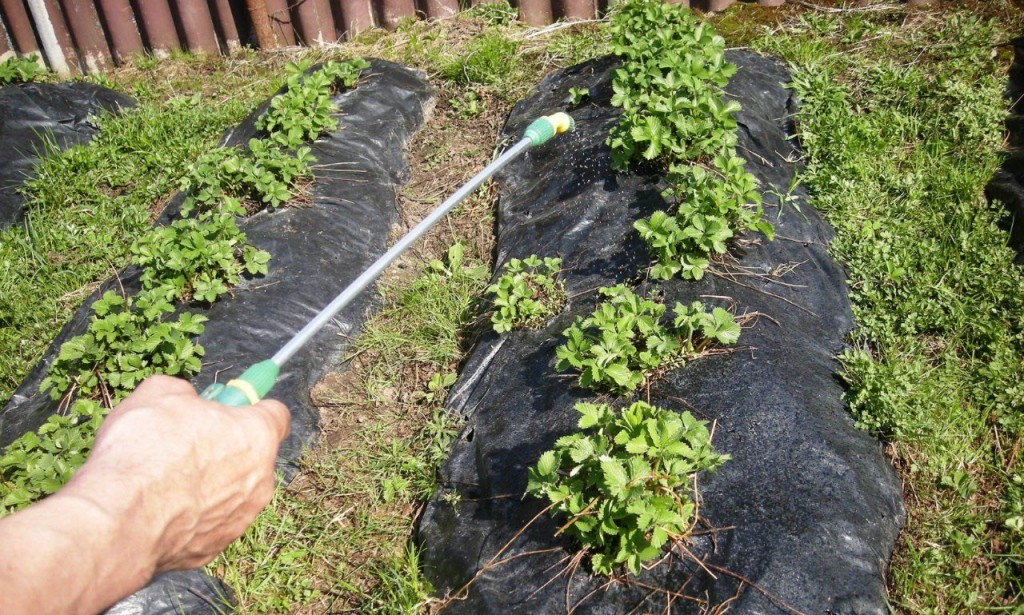
Strawberries in spring care
The better to feed and process strawberries in the spring before flowering and before flowering in April: advice of experienced gardeners
You can feed strawberries with both mineral and organic fertilizers. In general, the most optimal option is the use of mullein, chicken or nettle. Also, ammonium and nitroammofosk sulfate are often used.
This kind of fertilizer contributes to the appearance in green fresh leaves, and also stimulates the growth of bushes. Fertilizers are found in the middle of April. Before flowering, at the very beginning, processing is carried out using organic fertilizers. It is best to use humus or chicken droppings.
If the bushes are more than 2 years old, then it is necessary to use mineral fertilizers. Because organic may not be enough to stimulate growth.
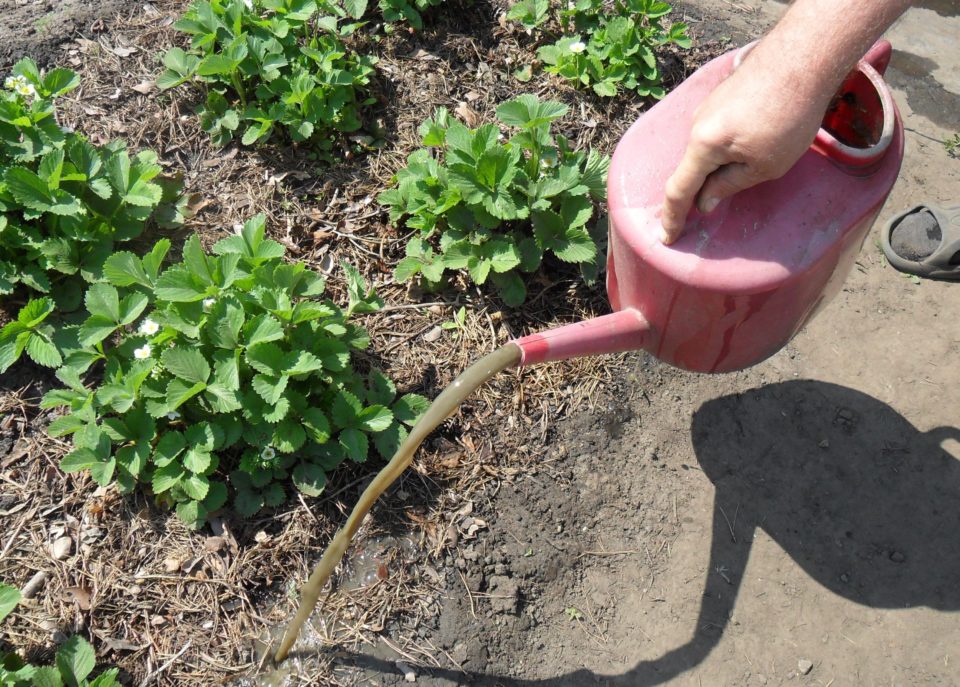
Top dressing
The better to feed and process strawberries in the spring during flowering in May: tips, care for flowering strawberries
Immediately before flowering, it is necessary to fertilize strawberries with a mixture of nitrophosics and potassium sulfate.
Instructions:
- To do this, dissolve 50 g of each of the substance in 10 liters of water.
- Pour the resulting solution and every bush. The liquid must not be allowed to fall on the leaves and buds.
- Try to pour only on the soil. For one bush, half a liter of solution is enough.
Many summer residents are afraid to feed strawberries during flowering, as they think that this will affect the crop. This is a delusion, because during flowering it is necessary to feed plants with complex fertilizers with trace elements.
Please note that the concentration of substances should be 3 times less than when feeding before flowering. The most soft is compost. During flowering, it can be placed around the circumference of the bush with a layer of 5-8 cm. It can also be fed during flowering ash. For this, the bushes are sprinkled with ashes. For one bush, approximately 15 grams of ash are needed. Sometimes fed strawberries with iodine. The solution is made very weak, only 10 drops of iodine are needed on a bucket of water. Spray the bushes before flowering.
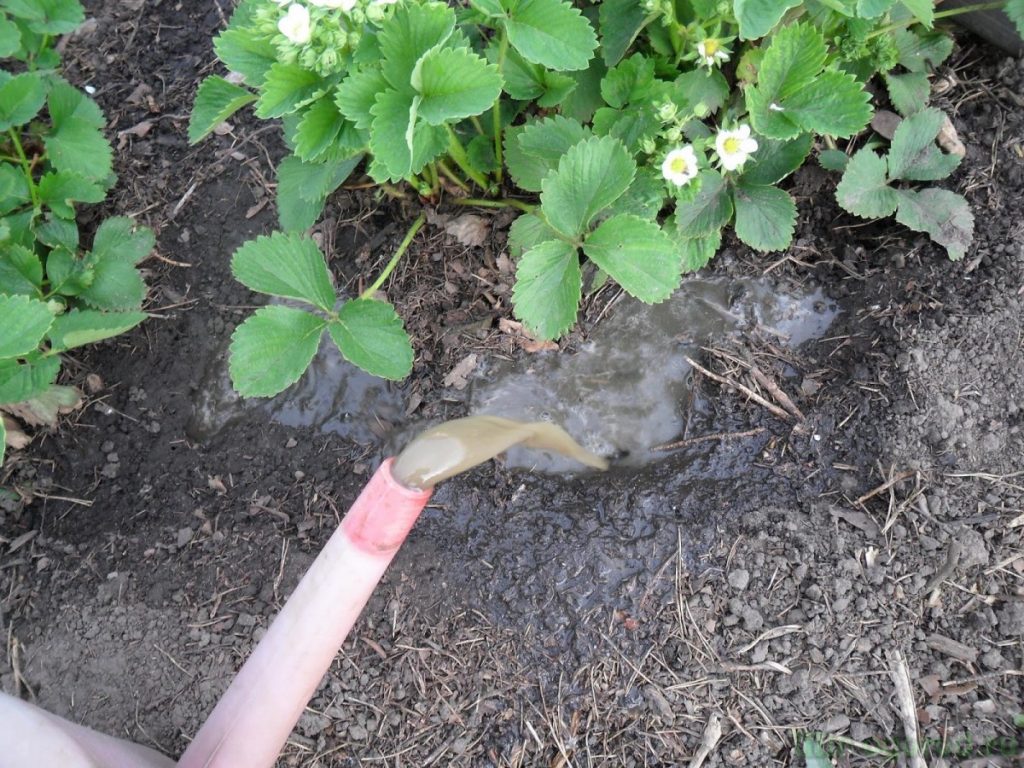
Water the bushes
How to treat strawberries in spring from diseases, pests, weevils and gray rot?
From diseases, strawberries are most often treated with complex drugs. The best option is phytosporin, cardocide, Farid, agate. All these substances prevent the appearance on plants of gray rot, powdery mildness and wilting. Watering and spraying is carried out according to the instructions indicated on each of the drugs.
Flack and root feeding, watering strawberries in the spring: Description
Root processing includes drugs that are administered in the form of irrigation. But to increase the harvest, foliar processing, that is, spraying, is often used. The most optimal option for spraying is a solution of boron. Processing is carried out before flowering and during it. In order to spray, a little bore is dissolved in water and repeated processing every four days before the end of flowering.
The root processing is carried out using mullein, complex mineral fertilizers, nitrate, as well as bird droppings and compost. It is best to choose environmentally friendly fertilizers that do not harm plants and humans.
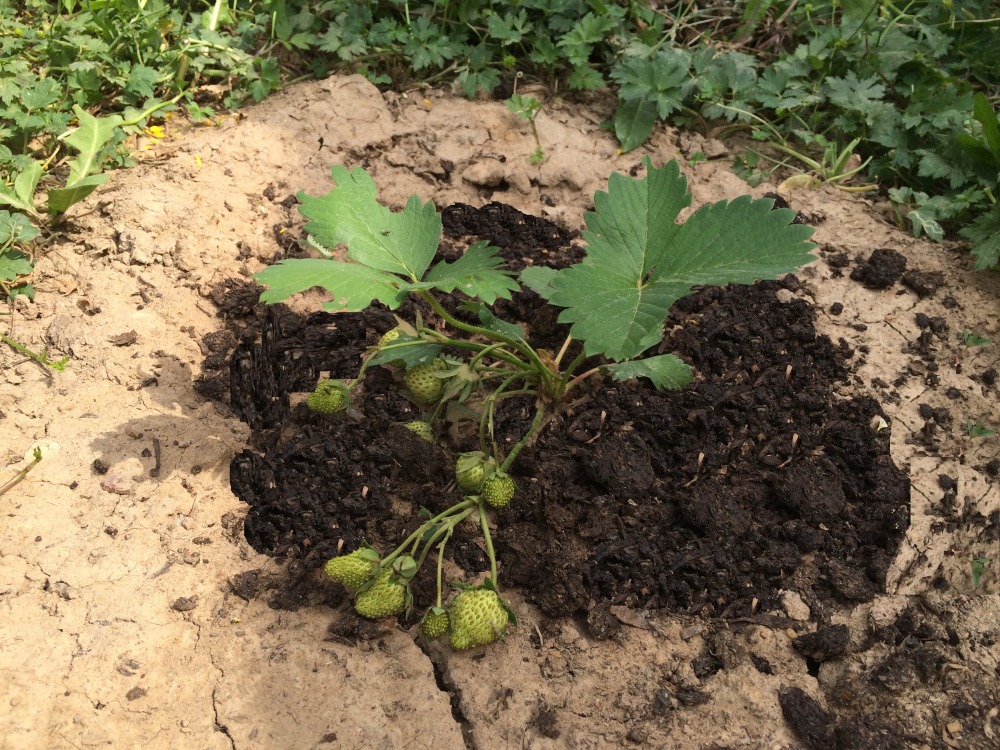
Strawberries in spring care
How and in what quantity to use ammonia, urea for feeding and processing strawberries in the spring?
Urea and ammonia is often used for watering strawberries both in spring and before flowering. Most often, doses of the use of fertilizers and urea are selected. The best option is 5-12 g per square meter of the garden. It is in such an amount that it is necessary to introduce fertilizers into the soil.
Regarding ammonia, then watering is carried out in several stages. The very first option is after winter and garbage harvesting. Approximately 40 or 50 ml of ammonia is dissolved in a bucket of water. After that, the bushes are watered. Most often, watering can be used for watering with frequent holes. Try to water so that the solution does not fall on the leaves. The next processing is carried out immediately before flowering.
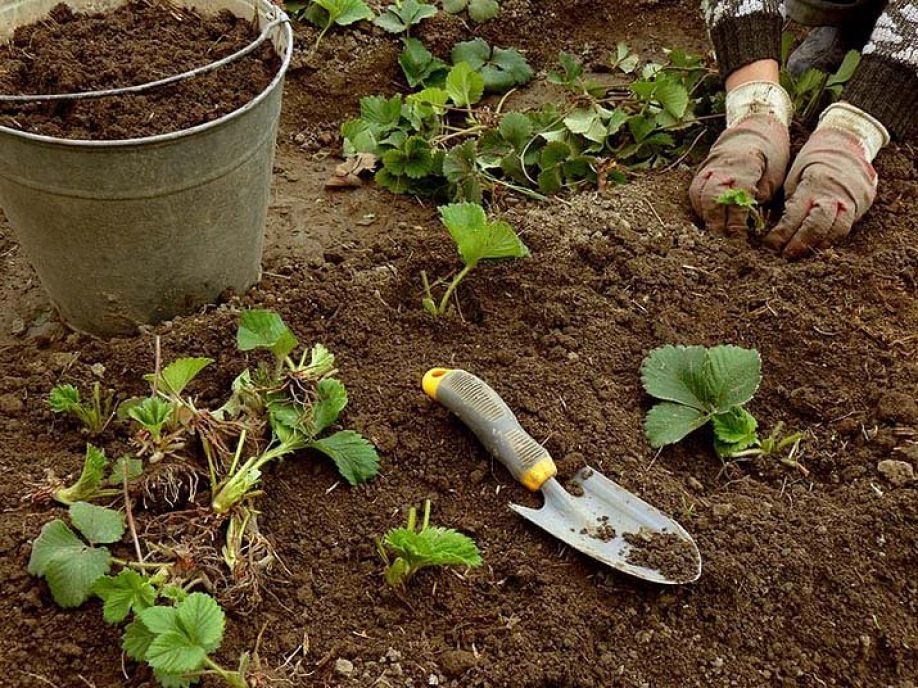
Ammonia milking strawberries
How and in what quantity to use iodine for feeding and processing strawberries in the spring?
Iodine is used by more than one generation of gardeners for watering strawberries. Most often, this is done not to improve the crop, but in order to prevent various diseases. Iodine copes with various kinds of spotting, as well as fungal ailments.
Instructions:
- For processing, it is necessary immediately after the winter and the collection of garbage to dissolve 10 drops of iodine in a 10 liter bucket of water and processing.
- The next processing is carried out before flowering. During flowering and the appearance of berries, processing is not carried out.
- Try to ensure that the solution does not fall on the leaves, as this can provoke burns.
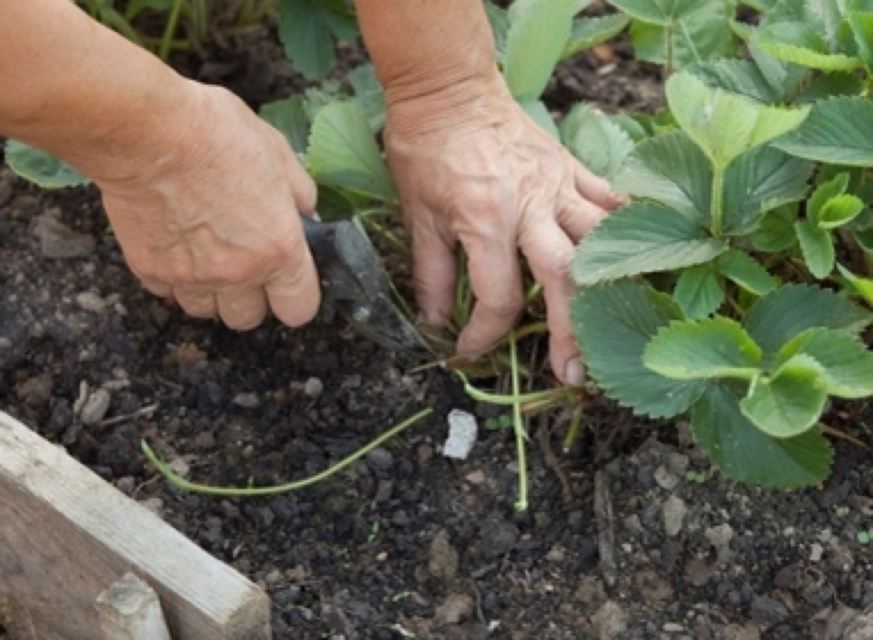
Iodine processing
How and in what quantity to use boric acid to feed and process strawberries in the spring?
With a lack of boron, strawberry leaves are often covered with necrosis and twisted. Therefore, processing is usually carried out after winter, as well as during the appearance of peduncles. There are several options for using boric acid:
- Together with potassium permanganate. To do this, one gram of potassium permanganate and boric acid is dissolved in a bucket of water and watering is carried out. The amount of the resulting solution is enough for 30-40 berry bushes.
- You can also carry out foliar processing. To do this, 5 g of powder are dissolved in 10 liters of water and spraying is carried out. This is best done before flowering. And during the appearance of flowers and berries, processing should not be carried out.
How and in what quantity to use ash for feeding and processing strawberries in the spring?
It is best to carry out ash processing in April. To do this, when you completely cleaned the garbage bushes, bleach the soil, you need to enter 15 g of ash and under each bush.
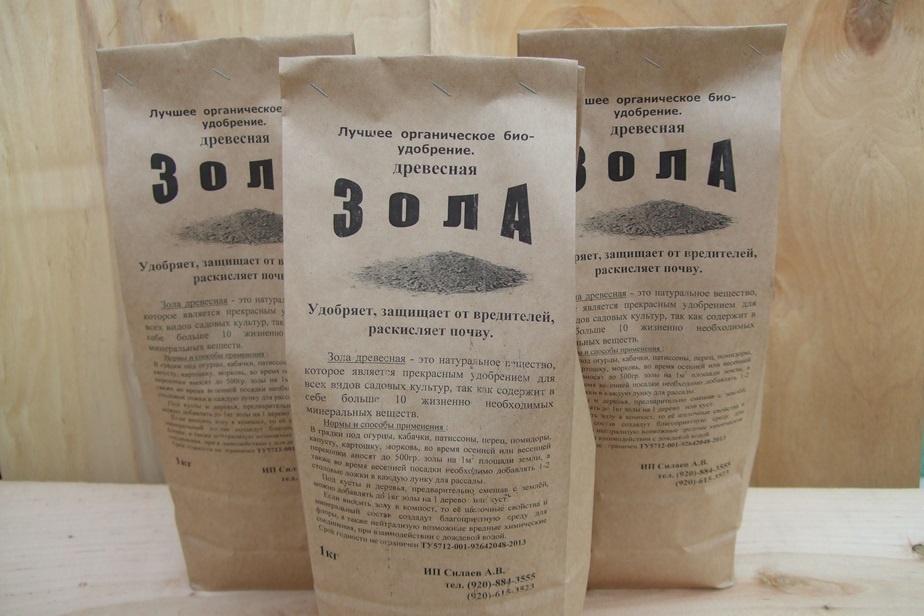
Zola for strawberries
How and in what quantity to use yeast to feed strawberries in the spring?
Yeast contains nutrients, thiamine, as well as vitamin C. This is a great growth stimulator for strawberries.
Instructions:
- To prepare a nutrient solution, it is necessary to dissolve 50 g of yeast in a small amount of warm water.
- When a foam appears on the surface of the solution, it is necessary to pour into a ten -liter bucket of water at room temperature.
- After that, strawberries are watering. Typically, such processing is carried out in early spring or before flowering.

Exhaust strawberries
How and in what quantity to use hydrogen peroxide for feeding and processing strawberries in the spring?
It is believed that hydrogen peroxide fights perfectly with various bacterial infections, so it is advisable to carry out such treatment for the purpose of prevention.
Below in the video you can find how strawberries are processed using hydrogen peroxide.
Video: Transoxide for strawberries
How and in what quantity to use chicken droppings for feeding strawberries in the spring?
Chicken litter for fertilizing strawberries can be used both in dry and dissolved form. In the video you can see in more detail how chicken droppings are used to fertilize the berry.
Video: litter litter
How and in what quantity to use manure for feeding strawberries in the spring?
A great option for fertilizers is manure. It can be used both in autumn and in the spring. Most often, top dressing is carried out during digging the beds in the fall. During the winter, the halter overdue and in the spring becomes an excellent source of nitrogen.
Instructions:
- To feed the bushes, if desired, you can introduce fertilizers in early spring.
- To do this, it is necessary to dissolve 1 part of the manure in 20 parts of warm water.
- The resulting solution is left in the sun for 2 hours. After that, processing is carried out.
- No need to pour fertilizer to the roots. Watering is mainly between the beds.
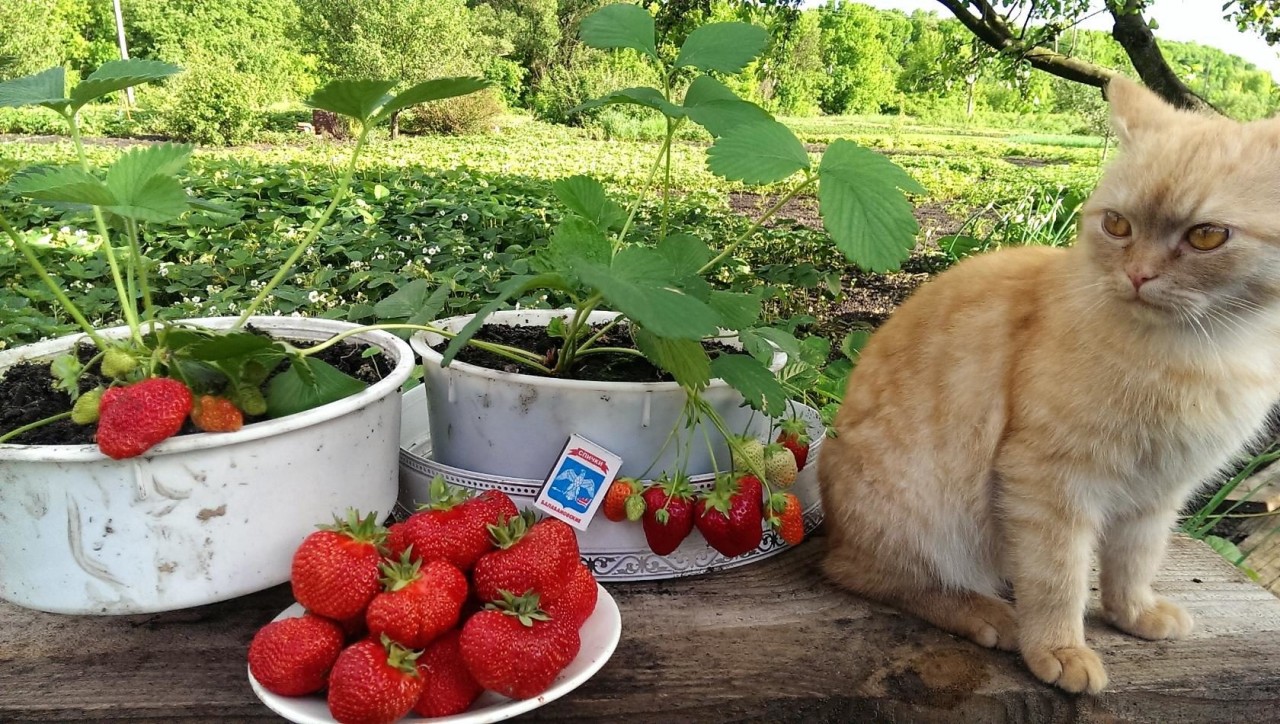
Manure for strawberries
How and in what quantity to use potassium permanganate for feeding and processing strawberries in the spring?
Plants are used not in order to fertilize strawberries, but to prevent the appearance of pests. Perfectly potassium cope with the Pennita. This is a pest that allocates a foam similar to saliva. It can be seen on strawberry leaves. It is necessary to dissolve the potassium permanganate in warm water. For this, it is necessary that the solution is pale pink.
If you want to get rid of the foam, then you need to process a very hot solution, the temperature of which is 70 degrees. In this case, the solution should be quite concentrated and differ in bright pink. If you carry out processing for the purpose of prevention, then the solution should be with a temperature of 45 degrees.
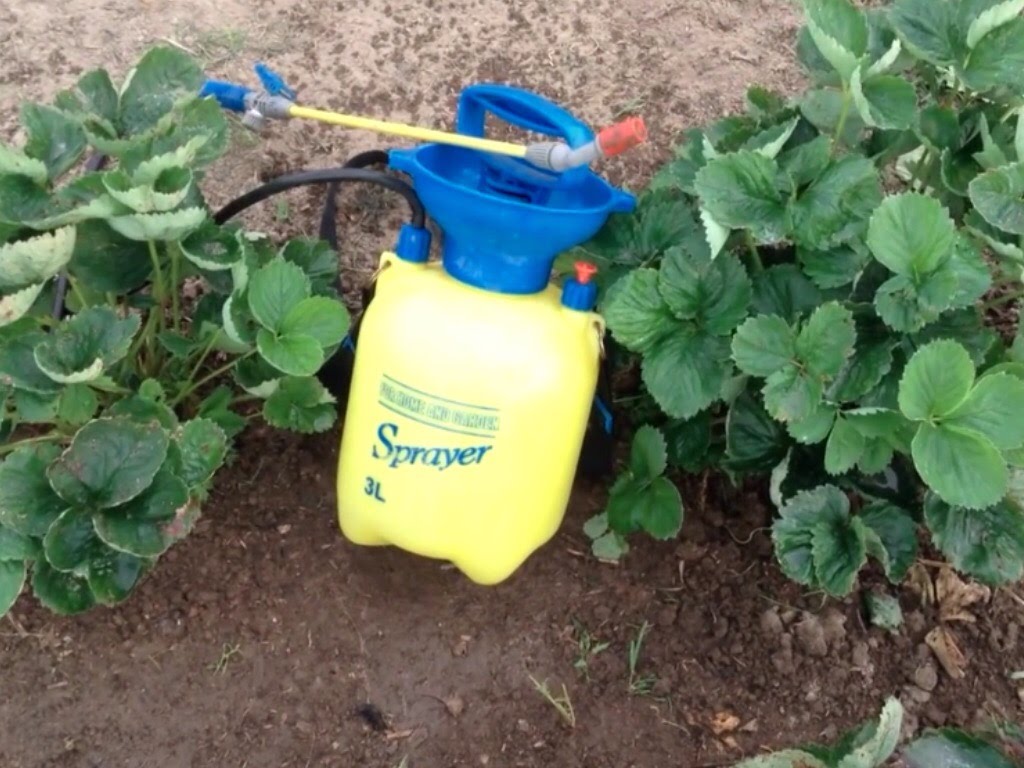
Contecking for strawberries
How and in what quantity to use copper sulfate for feeding and processing strawberries in the spring?
To feed and prevent many diseases in early spring, a solution of copper sulfate is used.
Instructions:
- To do this, 5 grams of crystals are dissolved in 10 liters of water.
- Strawberry bushes are watered with this solution. Processing should be carried out before flowering.
- Best after winter, immediately after cleaning rotten leaves and mulching the soil.
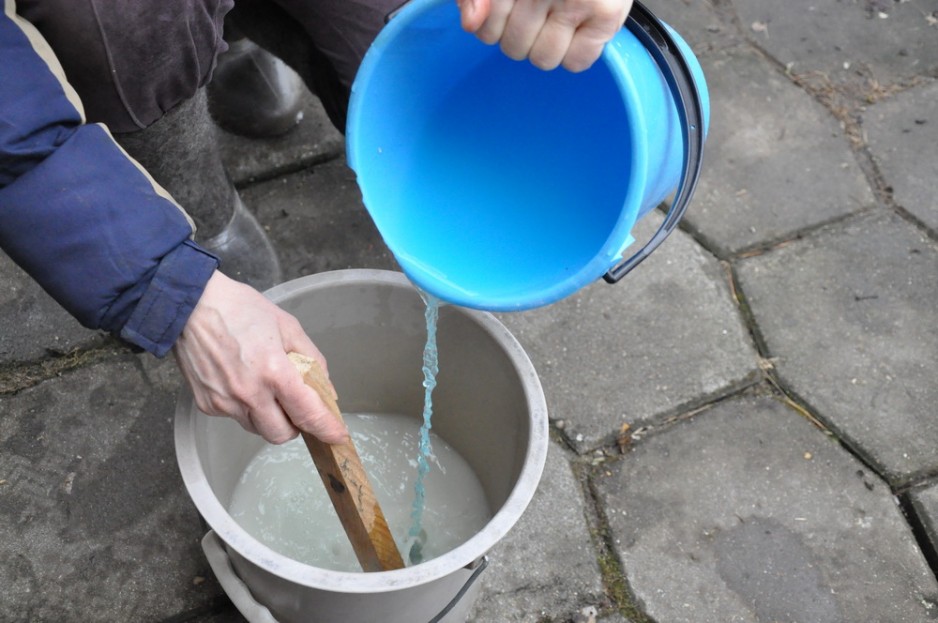
Copper sulfate for strawberries
How and in what quantity to use carbamide for feeding and processing strawberries in the spring?
Carbamide is urea, which is often used to feed strawberries. This is one of the types of nitrogen fertilizers and allows you to get rid of nitrogen deficiency. You can carry out both foliar and root top dressing. In the video you can see in more detail how fertilizer with urea is produced.
Video: Carbamide for strawberries
How and in what quantity to use a burgundy mixture for feeding and processing strawberries in the spring?
This substance is used to avoid rot, as well as the development of fungi. Processing is carried out in early spring. For this, a weak one percent solution is used.
Instructions:
- It is necessary to dissolve 100 g of the mixture in 10 liters of water.
- It is necessary to use one and a half liters of solution for processing, which are enough by 10 square meters of the garden.

Bordeaux mixture for strawberries
How and in what quantity to use superphosphate to feed strawberries in the spring?
Phosphate is often used during strawberry planting. There are several use options:
- The bucket of compost is required 25 g of potassium salt, 20 g of carbamide and 45 g of superphosphate.
- This tool is dissolved in 10 liters of water and the bushes are watered.
- In a mixture with ash and humus. It is necessary to introduce 30 g of phosphate, 1 cup of ash in 10 liters of humus.
How and in what quantity to use complex fertilizers for feeding strawberries in the spring
There are a huge number of complex fertilizers, so it is necessary to focus on the instructions indicated on the package for each of the funds. Below is a list of the most popular means that are used in feeding strawberries:
- Ryazanochka
- Nutrifite
- Solution
- Violent fertilizers
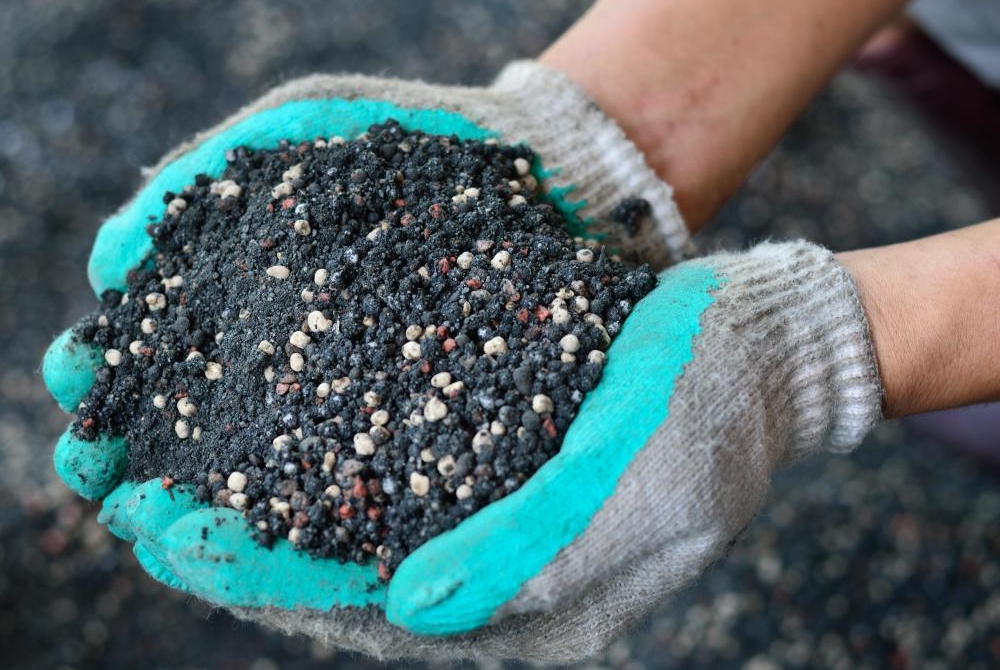
Complex fertilizers for strawberries
Strawberries are quite capricious berry, the productivity of which directly depends on how carefully you are looking after it. Therefore, the use of fertilizer and top dressing in the spring is an important stage for obtaining a good harvest of the berry.
